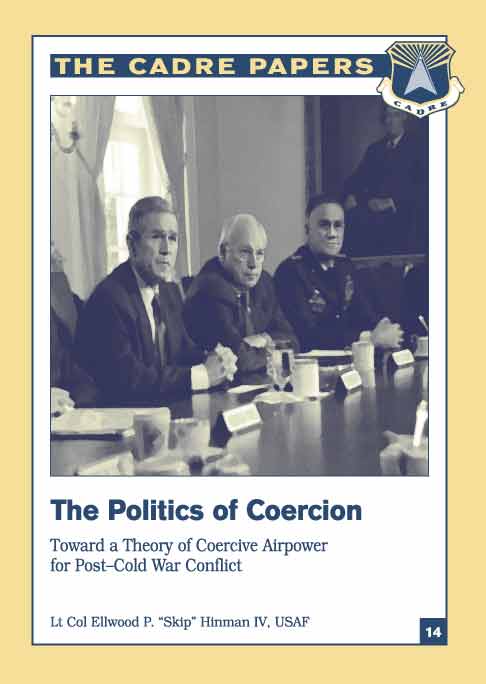 Lieutenant Colonel Hinman examines what coercion theory suggests about the use of airpower in the early twenty-first century. Specifically, he seeks to determine whether any of the existing theories of coercion can stand alone as a coherent, substantive, and codified approach to airpower employment. Framing his analysis on three key attributes of conflict in the post-Cold War era--limited, nonprotracted war; political restraint; and the importance of a better state of peace--Hinman examines the contemporary applicability of the four major theories of coercive airpower: punishment, risk, decapitation, and denial. Finding limitations in these theories, he proposes a three-phase "hybrid approach" to coercion that more adequately meets the needs of post-Cold War conflict.
Lieutenant Colonel Hinman examines what coercion theory suggests about the use of airpower in the early twenty-first century. Specifically, he seeks to determine whether any of the existing theories of coercion can stand alone as a coherent, substantive, and codified approach to airpower employment. Framing his analysis on three key attributes of conflict in the post-Cold War era--limited, nonprotracted war; political restraint; and the importance of a better state of peace--Hinman examines the contemporary applicability of the four major theories of coercive airpower: punishment, risk, decapitation, and denial. Finding limitations in these theories, he proposes a three-phase "hybrid approach" to coercion that more adequately meets the needs of post-Cold War conflict.
Author(s) • Lt Col Ellwood P. Hinman
Year • 2002
Pages • 88
ISSN • 1-58566-109-0
AU Press Code • CP-14